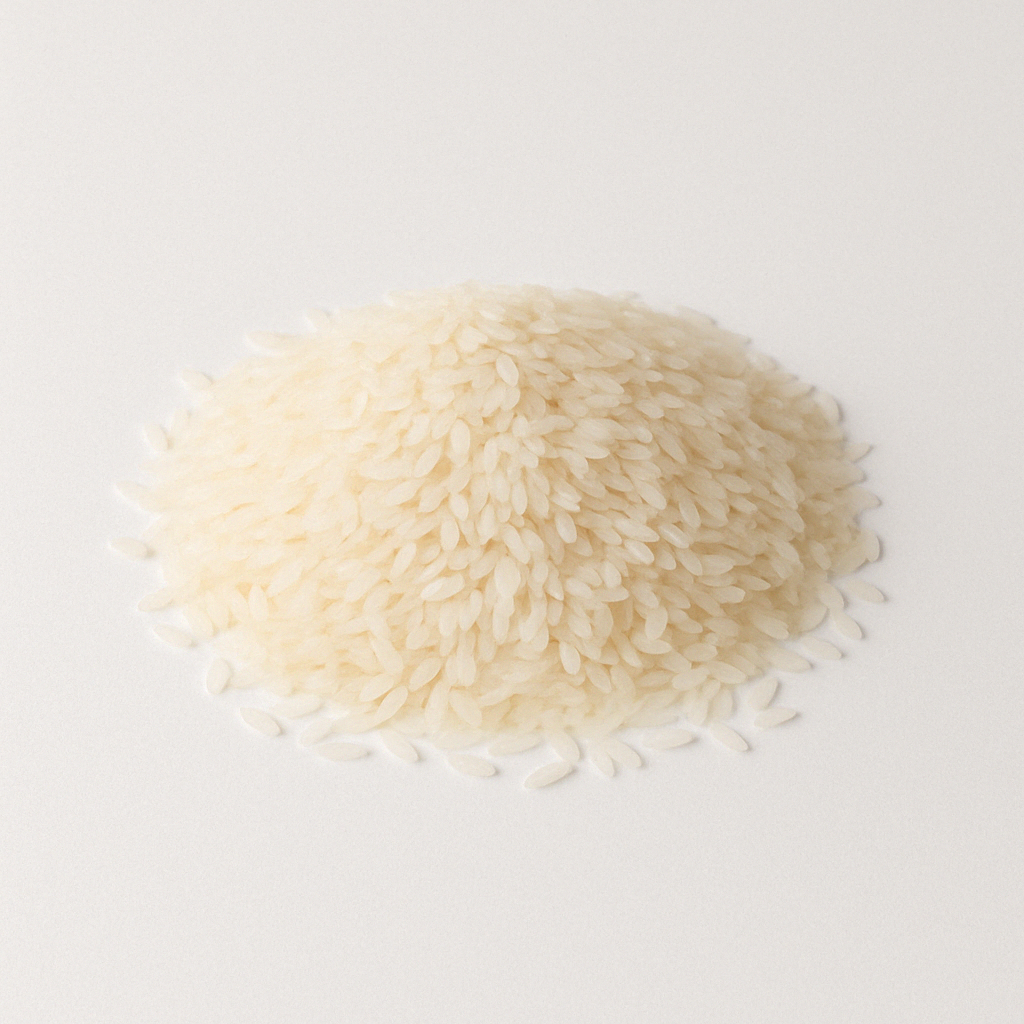
쌀 from 파키스탄
Featured suppliers
/132x132/company-logo/0b/59/87/0b59875117adb7a0a19d7916c3251871b1ba9e5e/unnamed.jpg)
/132x132/company-logo/c2/1b/6f/c21b6f2dc4988e326a23f25e982a50221c5787a8/Screenshot_2025-01-16_123903.png)
About this market
About
History
Rice is Pakistan’s second most important staple crop after wheat and a key contributor to the country’s agricultural exports. It plays a critical role in rural livelihoods and foreign exchange earnings. Pakistan is globally recognized for its premium long-grain Basmati rice, particularly Super Basmati and 1121 Basmati, which are renowned for their fragrance, length, and texture. The country also produces high volumes of non-Basmati varieties such as IRRI-6 and PK 386, widely exported to Africa and Southeast Asia. Pakistan ranks among the top five global rice exporters, with strategic positioning in both premium and mass-market segments.
Production Regions
- Punjab (Hafizabad, Sheikhupura, Gujranwala): Heartland of Basmati rice cultivation.
- Sindh (Larkana, Jacobabad, Badin): Produces IRRI-6 and hybrid varieties for export.
- Khyber Pakhtunkhwa (Swat): Smaller production area for aromatic varieties.
- Balochistan: Limited but growing rice production under irrigation.
Growing Conditions
- Altitude: 0–500 meters above sea level.
- Climate: Subtropical to arid; heavy monsoon rainfall during July–September.
- Soil: Alluvial plains in Punjab; clay loam in Sindh.
- Farming System: Predominantly small to medium-sized farms.
- Irrigation: Canal-fed systems from the Indus Basin Irrigation System.
Harvesting Process
- Manual and Mechanical Harvesting: Manual sickle cutting in traditional zones; combine harvesters in larger farms.
- Threshing & Cleaning: Performed using small-scale machinery or industrial lines.
- Drying: Sun drying is common; mechanical drying adopted by export-focused millers.
- Milling: Modern mills clean, de-husk, polish, and sort grains.
- Storage: Packed in jute or polypropylene bags; stored in controlled warehouses.
Cultivation Methods
- Basmati Cultivation: Requires specific agro-climatic conditions and longer growth period.
- Hybrid & IRRI Varieties: Shorter growth cycles, higher yield, and suited for Sindh and southern Punjab.
- Traditional Methods: Transplanting by hand, mostly in Basmati areas.
- Mechanization: Increasing in IRRI zones with mechanized sowing and harvesting.
- Cultivation Size: Predominantly smallholder farming, with plots averaging 1-3 hectares.
Supply Chain
- Producers: ~2.5 million rice farming households.
- Commission Agents/Middlemen: Link farmers with millers and exporters.
- Millers: Range from small local units to large export-oriented industrial mills.
- Ports: Karachi Port and Port Qasim handle the bulk of rice exports.
Local Logistics
- Transport: Road networks connect farms to mills and ports.
- Drying Infrastructure: Sun-drying pads and mechanical dryers in mill zones.
- Storage: Warehouses near mills or export clusters; ambient conditions or cooled for aged Basmati
- Challenges: Inconsistent electricity, outdated milling in rural zones, climate variability.
Regulations and Certifications
- Ministry of National Food Security: Oversees production standards and variety registration.
- Trade Development Authority of Pakistan (TDAP): Facilitates export promotion and compliance.
- Geographical Indication (GI): Registered for Basmati rice; efforts underway to expand coverage.
- Certifications: ISO, HACCP, Organic, Halal, and SGS inspection for international trade.
Quality Standards
- Grades: Based on broken percentage, grain length, color, and polish.
- Moisture Content: Maintained at 12–14% for exports.
- Flavor Profile: Basmati offers nutty aroma and elongation when cooked.
- Size & Shape: Basmati grains average 6.5–7.5 mm pre-cooked; IRRI types are medium-long.
Trade Terms
- Exports (2023): ~4.5 million MT; 40% Basmati, 60% non-Basmati.
- HS Code: 100630 – Milled rice.
- Top Destinations: UAE, Saudi Arabia, Kenya, China, UK, Afghanistan.
- Terms: Mostly FOB Karachi; CIF offered for premium and branded shipments.
- Payment: Letter of credit (LC) is most common; advance TTs for smaller buyers
- MOQ: 5 Mega tons for containerized; bulk vessels for large buyers.
Environmental Impact
- Positive Impacts: Efficient irrigation supports productivity.
- Challenges: Overuse of water in Basmati areas; salinity and pesticide concerns in Sindh.
- Sustainability Practices: Promotion of water-saving techniques and organic Basmati projects.
Social Impact
- Rural Employment: Key income source for millions in Punjab and Sindh.
- Cultural Heritage: Basmati rice features prominently in festivals and cuisine.
- Value Chain Development: Farmer training, contract farming, and traceability initiatives expanding.
Uses
- Aromatic Basmati: Preferred for biryani, pilaf, and premium retail.
- IRRI & Hybrid Rice: Used in household staples and bulk exports.
- Parboiled Rice: Popular in African and Gulf markets.
- Broken Rice: Sold to breweries and animal feed processors.
Harvesting seasonality
Varieties
Super Basmati
Pakistan’s signature Basmati rice, known for its distinct fragrance, fluffy texture, and grain elongation when cooked. Preferred for high-end culinary uses.
PK 1121 (Basmati 1121)
The longest cooked grain length globally. Offers subtle aroma and excellent cooking texture. Now more popular than Super Basmati in some export markets due to its showy length and strong consumer demand.
IRRI-6
High-yielding, cost-effective variety widely grown in Sindh. Less fragrant than Basmati types but popular in parboiled and white rice exports due to its affordability and bulk cooking reliability.
Export of 쌀 from 파키스탄
Export overview
Export trend
Verified suppliers
/132x132/company-logo/0b/59/87/0b59875117adb7a0a19d7916c3251871b1ba9e5e/unnamed.jpg)
/132x132/company-logo/c2/1b/6f/c21b6f2dc4988e326a23f25e982a50221c5787a8/Screenshot_2025-01-16_123903.png)
/132x132/company-logo/14/c2/98/14c29842fd769bcd5e754081f53717461ebb6ec1/logo.png)
/132x132/company-logo/df/22/b2/df22b22e21e5da2ccf5351a61a12f2f729717070/LOGO.jpg)
/132x132/company-logo/b6/0e/e3/b60ee363d86dde2f4ad2324da62856bce2b66bb3/LANSAR_TRADE_LOGO_PNG.png)
/132x132/company-logo/75/7e/1d/757e1d6bec57590f51094e2cd50084bb9c21b7cc/logo.jpg)
/132x132/company-logo/12/08/ef/1208efa94df2c66ad818f629fa137b48d51d66a0/QF-DP.jpg)
/132x132/company-logo/89/4a/f1/894af155e0fe97080b4cbfb9f99c4cfaf2866596/WhatsApp_Image_2024-05-08_at_12.03.46_PM.jpeg)
/132x132/company-logo/7e/9b/05/7e9b0531921769d818108c96512919bbe1d6f6a7/KAFAF_LOGO.jpg)









